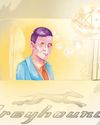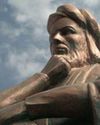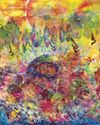
Should you have antiquarian interests, at some point you may want to read the medieval treatise Sic et Non written in 1120 by French theologian Peter Abelard (10791142 CE). It is a no-nonsense guide to critical thinking during the early Middle Ages. Merely reading its 158 theological questions would have been an education in itself for twelfth century university students, as within just a few minutes they would have discovered the kinds of questions that were routinely studied during that time.
If they had been fortunate (that is, rich) enough to own a copy of this book before the age of printing, they could have chosen any question that interested them about God and Christianity, and found both pro and con arguments by authorities, that would at first glance have seemed equally convincing. What they wouldn't have found, however, was a resolution of those questions, for that was the point of this groundbreaking, epochmaking, astonishing book. Students had to work their way through both sets of persuasive arguments to determine for themselves which arguments made the stronger case!
This personal challenge to each student caused a sensation in the medieval university world, which had always appealed to respected authorities and their proof texts to answer such questions. But here students were confronted with two sets of authorities that contradicted one another (hence the book's title: Yes and No).
Esta historia es de la edición June/July 2024 de Philosophy Now.
Comience su prueba gratuita de Magzter GOLD de 7 días para acceder a miles de historias premium seleccionadas y a más de 9,000 revistas y periódicos.
Ya eres suscriptor ? Conectar
Esta historia es de la edición June/July 2024 de Philosophy Now.
Comience su prueba gratuita de Magzter GOLD de 7 días para acceder a miles de historias premium seleccionadas y a más de 9,000 revistas y periódicos.
Ya eres suscriptor? Conectar

Metaphors & Creativity
Ignacio Gonzalez-Martinez has a flash of inspiration about the role metaphors play in creative thought.

Medieval Islam & the Nature of God
Musa Mumtaz meditates on two maverick medieval Muslim metaphysicians.

Robert Stern
talks with AmirAli Maleki about philosophy in general, and Kant and Hegel in particular.

Volney (1757-1820)
John P. Irish travels the path of a revolutionary mind.

IT'S A WONDERFUL LIFE
Becky Lee Meadows considers questions of guilt, innocence, and despair in this classic Christmas movie.

"I refute it thus"
Raymond Tallis kicks immaterialism into touch.

Cave Girl Principles
Larry Chan takes us back to the dawn of thought.

A God of Limited Power
Philip Goff grasps hold of the problem of evil and comes up with a novel solution.

A Critique of Pure Atheism
Andrew Likoudis questions the basis of some popular atheist arguments.

Exploring Atheism
Amrit Pathak gives us a run-down of the foundations of modern atheism.